Wildlands — Wallace does it again!
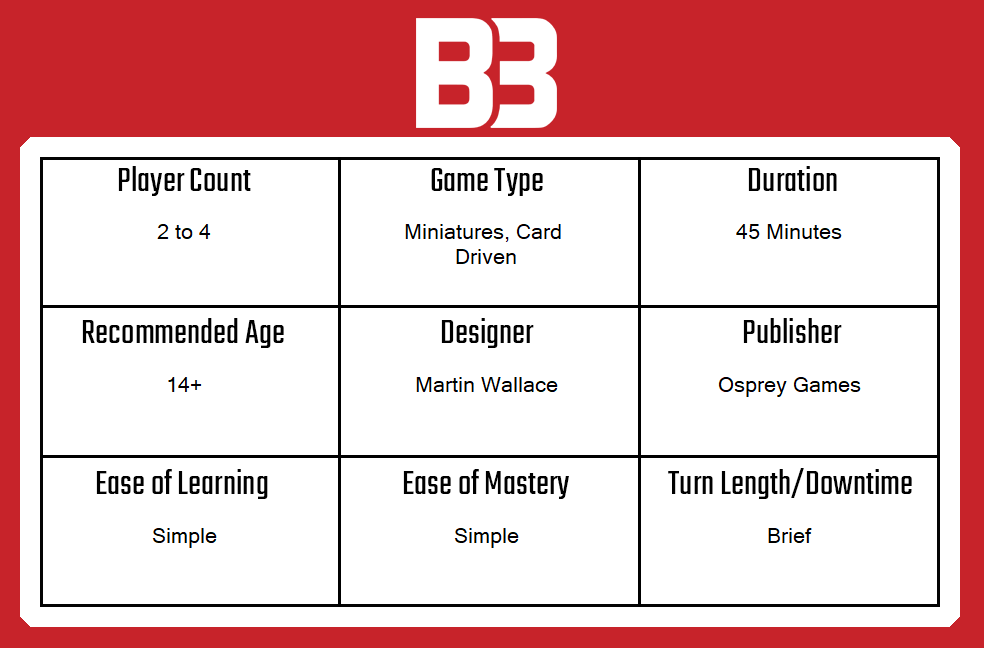
Once upon a time a designer called Martin Wallace decided that every game should be card driven, and once he had made war games, area control games and deception games thus, he rested. After pondering for a while, he thought “miniatures games should be card driven too” and with collaboration from Osprey Games, the pair drew up plans and set to work. When next they looked down upon what they had created, they saw a fast-paced arena combat game with a twist. They called it Wildlands.
OK, I’m sorry for the dramatic opening, but we all know that Martin Wallace is the God of card driven board games, and I honestly think that he must be one of the most prolific designers out there — we’ve covered at least two of his designs in Brass and Auztralia. What links almost every Martin Wallace game together is the way in which he uses card driven mechanisms to promote clever, fast paced play with little (or at least even) reliance on luck.
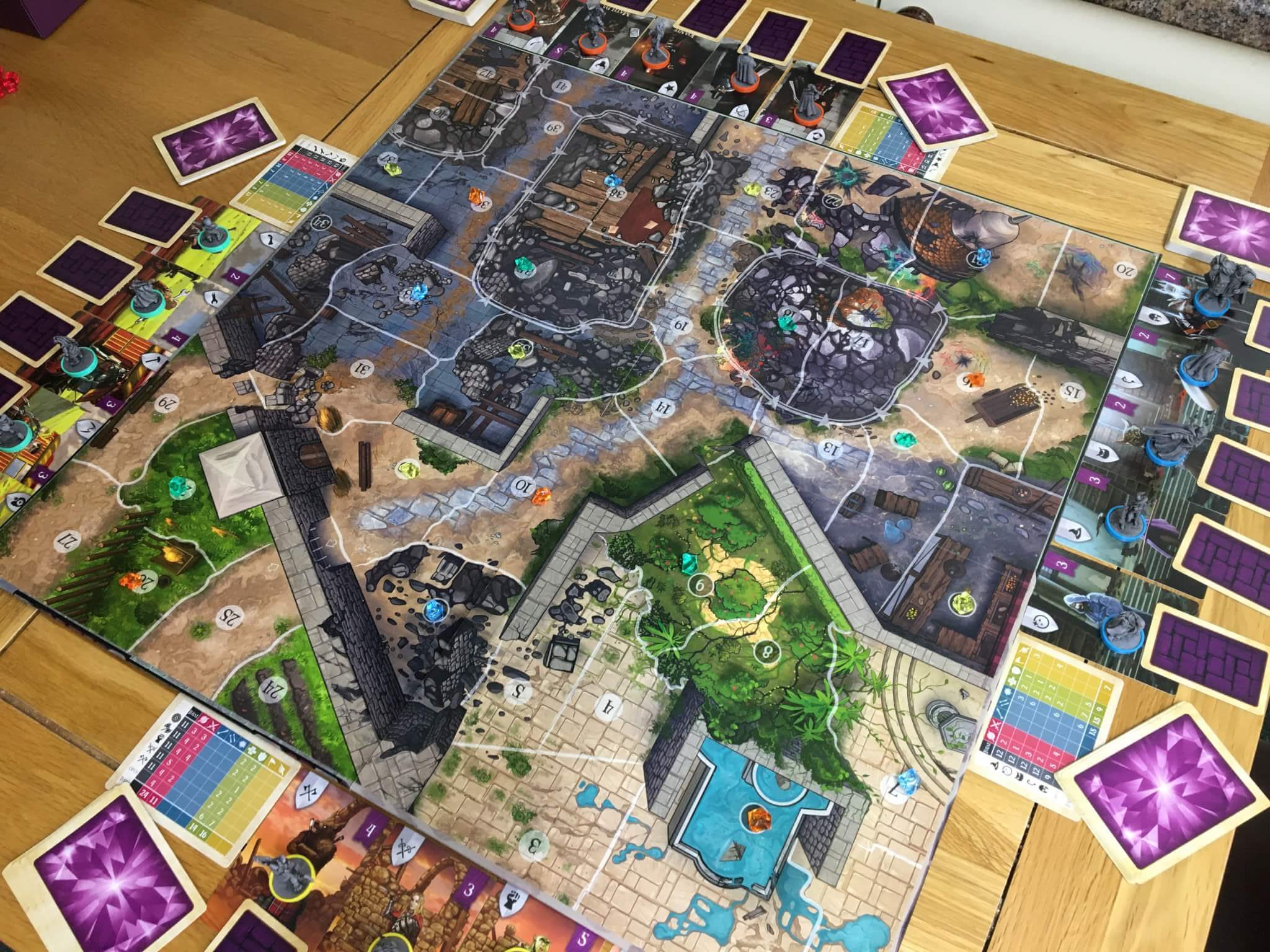
In Wildlands, each player (the game supports two, three or four) takes control of a faction that is comprised of five unique individuals. The object of the game is to reclaim all five gemstones (known as Shards) in the colour of your team, or to score points by defeating enemy characters, which can substitute for a gemstone, essentially meaning that the first to five points in any combination of Shards and defeated enemies, wins.
Wildlands also has a sudden death mechanic that deals with the issue of player elimination. In short, should any player have their entire team eliminated, then the game will end immediately, with the player who has scored the most points claiming the win. The base game includes four factions to begin with, and a further faction (The Unquiet Undead) adds a further option for the players to mess around with, but we haven’t been able to try to expansion at this point.
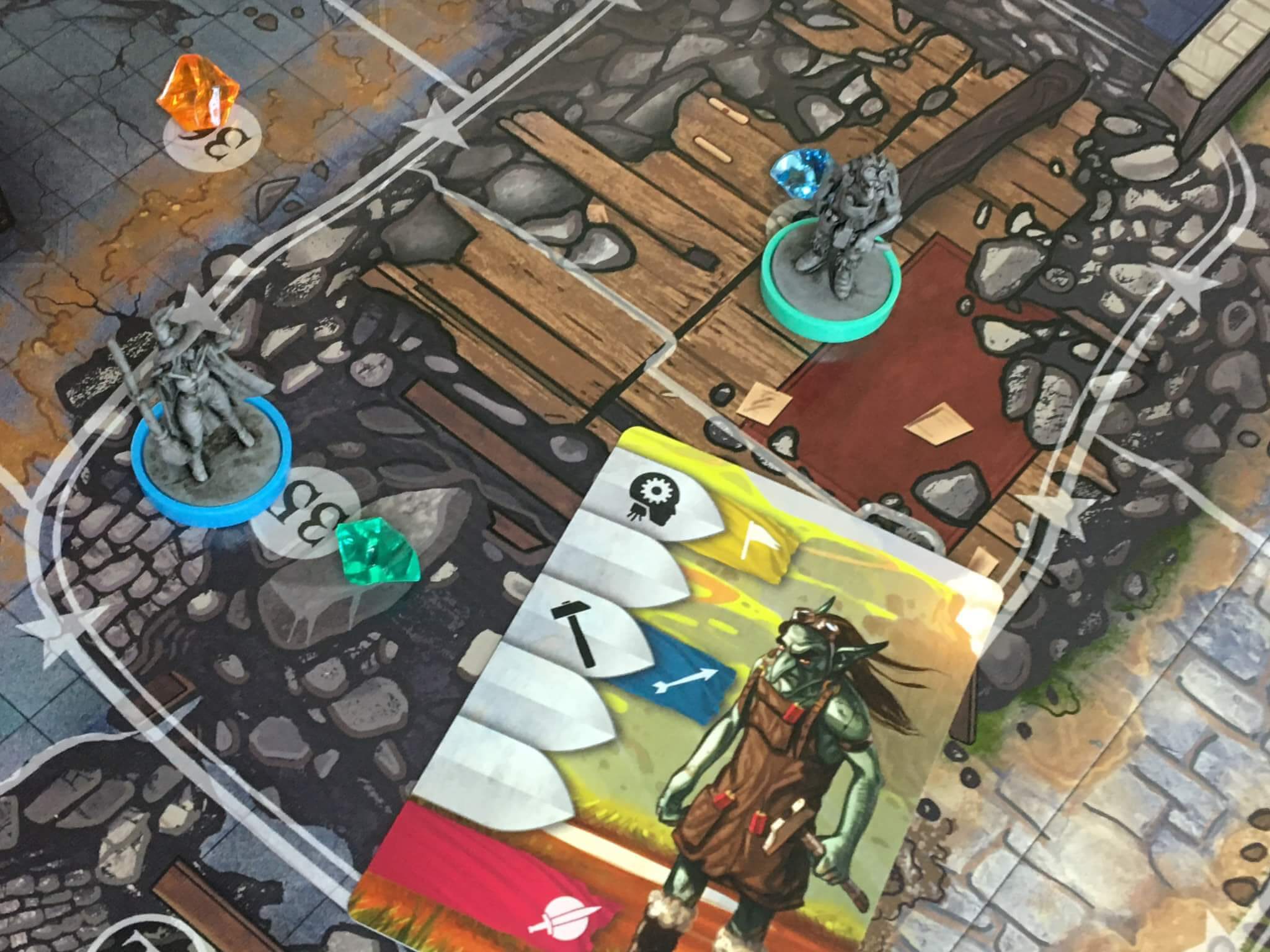
The components for Wildlands are of exceptional quality, and are very simple in their own right. The box is larger than it needs to be for what I assume are marketing reasons, but at least the size of it enables Osprey to show off the exceptional artwork that leaps off the cover. The theme continues onto the decks of cards that drive each faction, with each of the five characters brought to life through really evocative images captured in a bright, cartoonish pen.
The box contains twenty gems in the four colours, as well as twenty coloured bases that clip onto — you guessed it — twenty miniatures. Each character model is exceptionally detailed for what looks like 28mm scale, and a factory-applied wash brings out many of the finer details nicely. Characters range from relatively normal looking humans holding intricate weapons like swords and crossbows, to an owl, a gnome with four mechanical legs and several other wacky and complex miniatures.
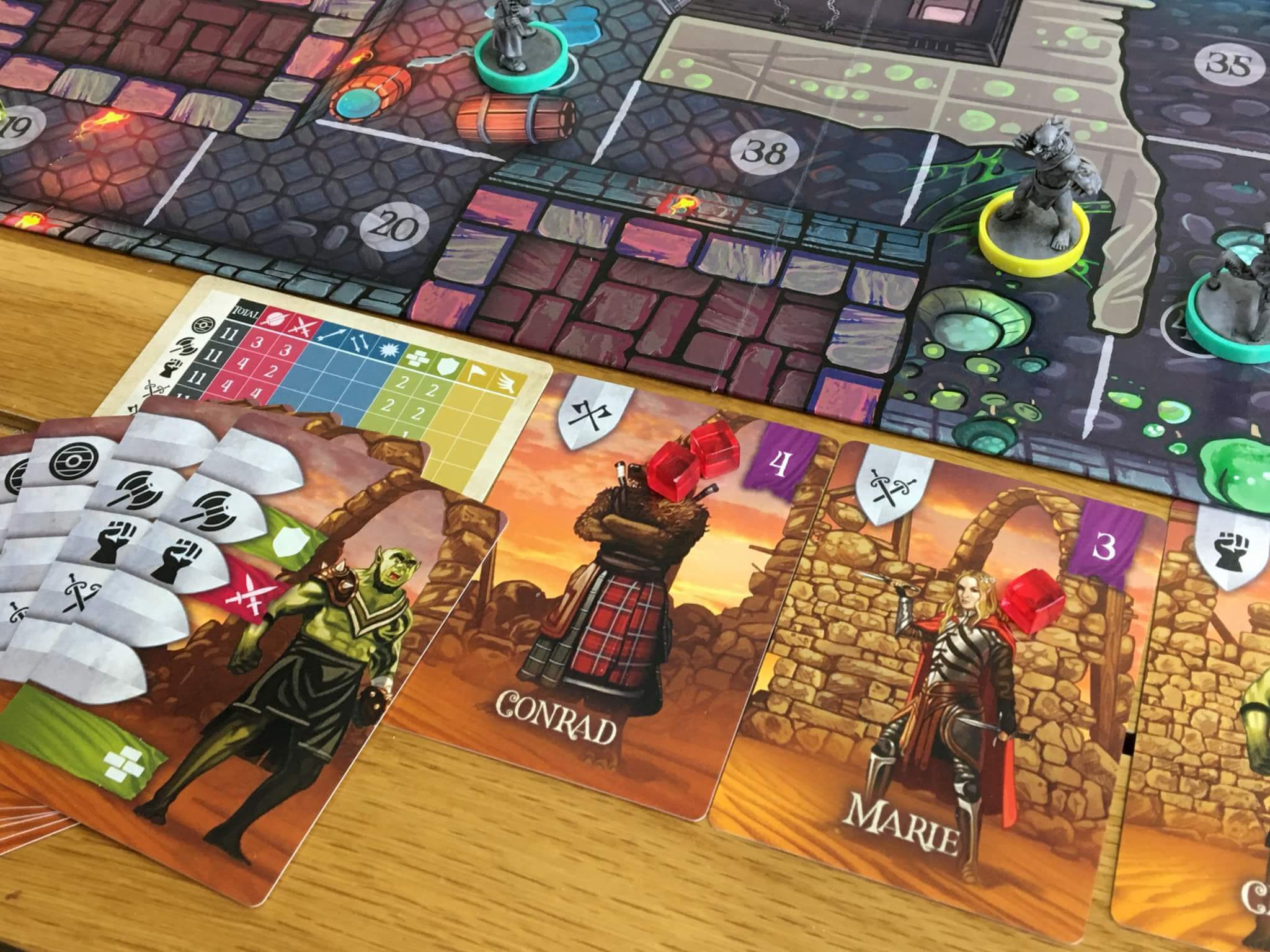
Finally, there is a large, translucent active player marker, a handful of damage tokens and a deck of numbered cards. These numbered cards are integral during setup, introducing another of Wallace’s favourite mechanisms (drafting) into the proceedings. Each player will be dealt ten of these cards, and must choose five of them to place on their characters to indicate their secret starting locations. The other five will be passed left, providing the locations where each player will place their Shards.
Once the game begins, players will use their starting hand of seven cards to activate their faction members, bringing at least one onto the board each turn (if any are still off it) via the numbered space on the card chosen for that character. The cards each player holds show two columns of information — a row of scales that indicate which character the cards relate to, and a row of flags to indicate what action(s) are allowed.
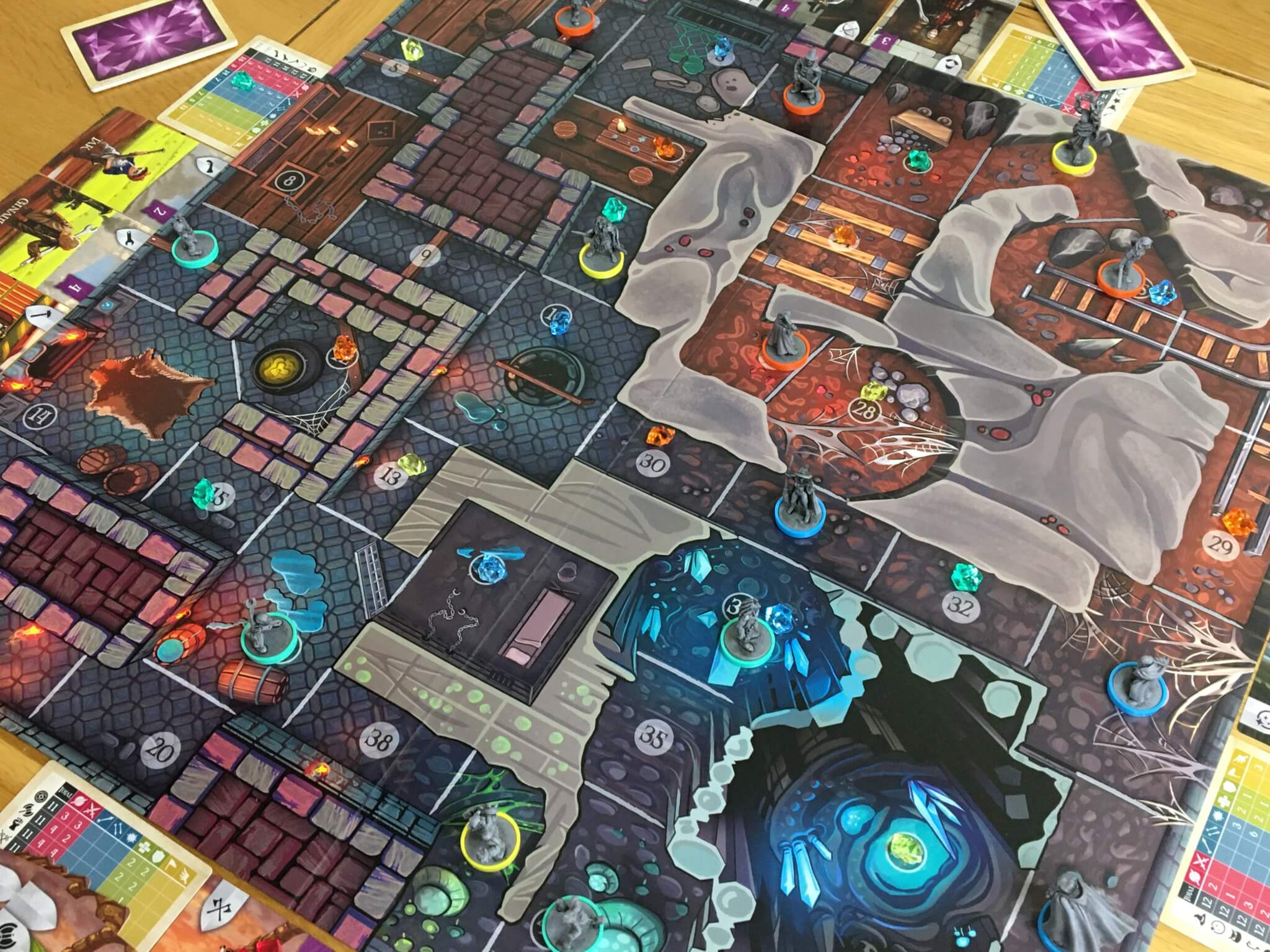
There are a few intricacies in the card play, but these become more and more straightforward with experience. In short, any card that shows the appropriate scale can be used to move one of the characters who has a matching scale, or the card can instead be used to take the flag action shown. Flag actions include melee and ranged attacks, or heavy ranged or melee attacks. There are also area attacks, shields, card draw and cover symbols, to name the majority of them.
With this in mind, an effective turn can consist of either positioning several characters but not necessarily doing much with them, or it might consist of one or two characters taking several actions each if multiple cards showing their symbols are spent. There are some actions, like climbing to high ground, that require two cards showing the relevant character symbol, or picking up a shard, which requires three.
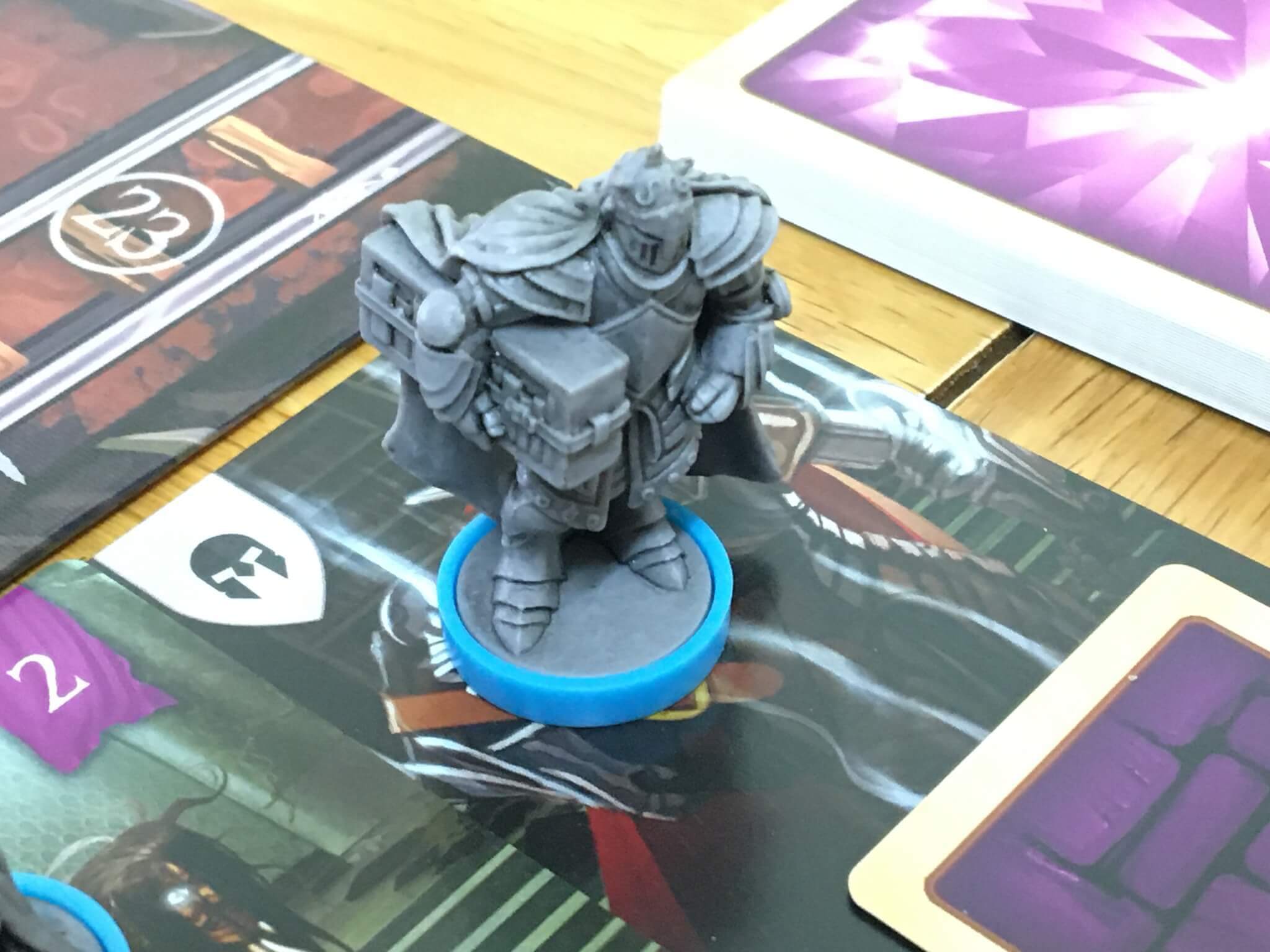
Combat is a simple matter for the most part — the attacking player just declares the kind of attack they want to perform and then plays the necessary card. Melee or heavy melee attacks can only be used in the same space as the attacking player, whilst ranged attacks use a simple line of sight mechanism that uses the central numbered circles as a guide about who can see who, regardless of how far away they might be. Basically, high ground and walls break cover, but distance itself is not a problem.
Some cards can allow defending characters to block, with shields and cover used to block ranged attacks and swords used to block melee, in general. Wild cards can be used to substitute any other symbol, and players will obviously treasure those cards to use only when needed, or when they enable a strategically important scenario to play out as they intend it.
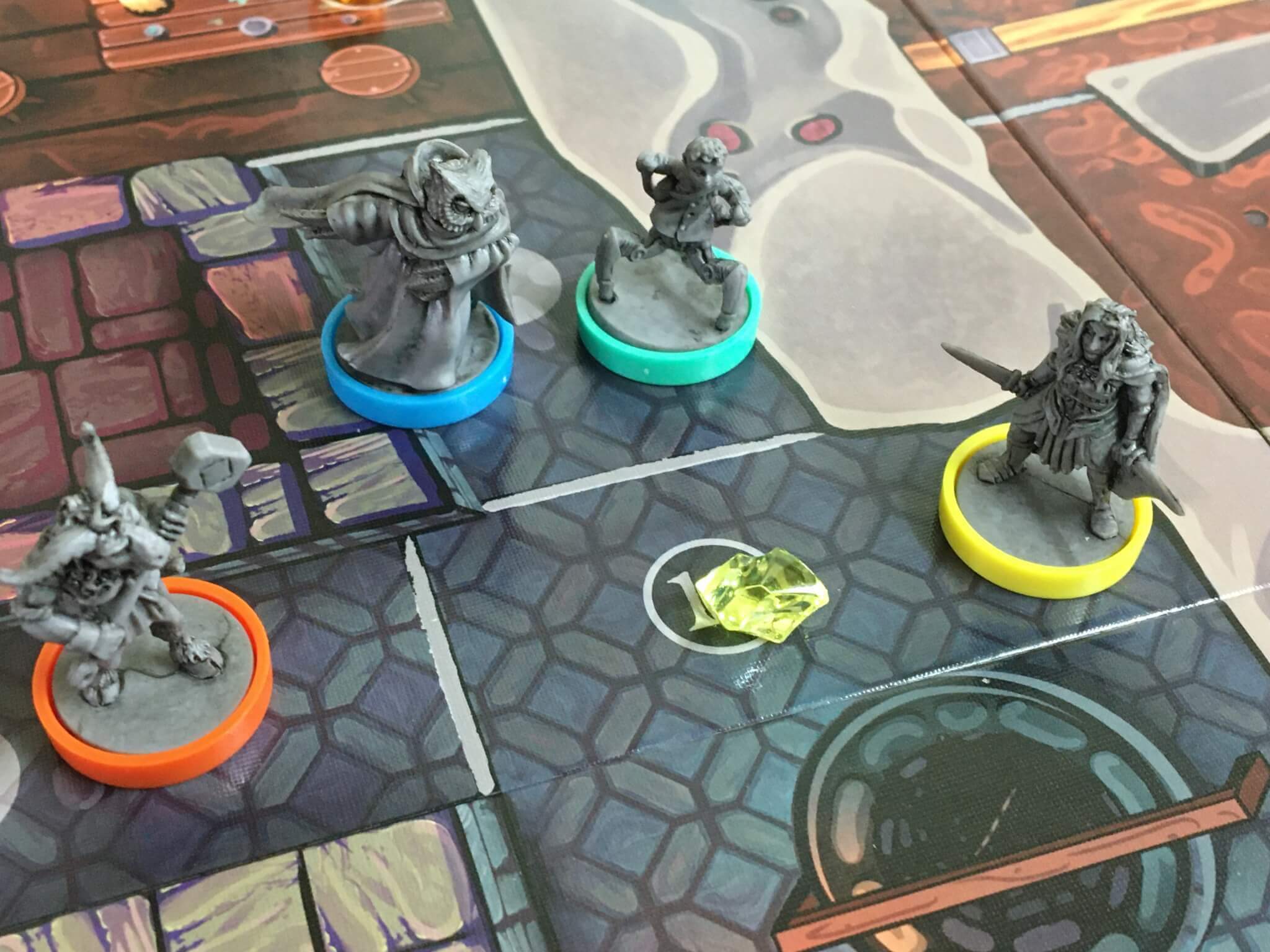
Very rare interrupt cards basically allow a player to almost take over the current players turn, enabling them to play a series of cards that might directly influence what the active player is doing. It’s also possible to interrupt an interrupting player, and once all of the interrupts are resolved, play returns back to the active player (who is usually quite miffed when this kind of thing happens).
There are quite a few nuances in WIldlands, but the summary of these rules is provided in the manual on a single page, and with occasional references to the detailed bits further in the manual, that page is all you really need to start playing really. As usual, Martin Wallace has created a design that has a lot of strategy and intrigue in it, yet the actual mechanics for playing the game remain pretty simple and are well in line with the fundamentals of many other games.
What makes Wildlands most interesting is how different each faction is. The Gnomads are fast and have several cards with the Rally ability (allowing them to move as a group) whilst the Pit Fighters are unmatched in hand to hand combat, but have no ranged capabilities. The Guild are an odd mix of glass cannons and one huge fellow that is an absolute tank, whilst The Lawbrigers offer a decent all round capability.

Wildlands offers a very different experience with four players than it does at two, since the board will be so much more congested. Characters are certain to be knocked out, since each one can only take an average of about three hits before being defeated. In a two or three player game, there is a bit more room to maneuver and it’s much more likely that players will reach a shard or two without much in the way of contention.
Wildlands looks beautiful both on the shelf and on the table. It has superb artwork, but even better miniatures, and the double sided board (which features to completely different maps) is very nicely done. The card art is also very good, and whilst everything is pretty, it’s also all very clear. The gameplay is simple and fast paced, and whilst there is a strong focus on combat, the introduction of the Shards absolutely provides another method of victory for players who prefer a bit of variety. Overall, it’s a game that I am keen to play more, and I’ll certainly be looking out for the expansion(s) in the future.
You can pick up Wildlands on Amazon.
Comments are closed.